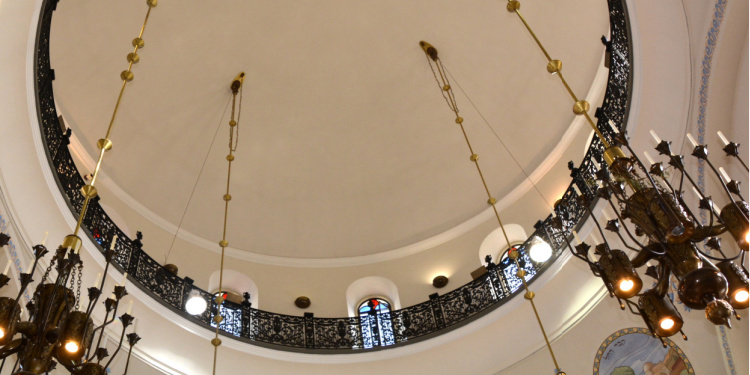A Yom Kippur Like No Other
The Fellowship | October 3, 2022

Miriam Lock, a staff member in The Fellowship’s Jerusalem office, shares her reflections on observing Yom Kippur, past and present.
Yom Kippur, which Jewish people around the world observe this week, is the holiest day of the Jewish year – a day of fasting and prayer, a day of forgiveness. I have been fasting on Yom Kippur and spending most of the day in the synagogue since my childhood.
In fact, Yom Kippur takes me back to my childhood. This Yom Kippur, as always, I will think of my grandfather, who was a rabbi in Chicago. I remember his synagogue on Devon Avenue on Yom Kippur night. I would sit in the downstairs sanctuary (two services took place simultaneously on Yom Kippur to accommodate the crowds) watching my grandfather, who we called Papa, at the front. Above his black suit he wore his kittel, a special ceremonial white robe. I remembered feeling at home, and also a little special because I was the rabbi’s granddaughter and he was always so happy to see me there.
When the chazzan (or cantor, who leads the congregation in prayer) says the Hineni prayer in the morning on Yom Kippur, I remember Mr. Raffle, the little man in my grandfather’s synagogue who would make a grand entrance from the corner of the room wearing a tall white head covering saved for the occasion. I admit that my sister and I used to laugh at the way he looked. When I got a bit older and learned more about the Yom Kippur prayers in school, I finally understood what Mr. Raffle was saying in his heavily accented Hebrew.
Papa, who was not only a wise man but also had a good sense of humor, once said, “You can take a man out of the shul (Yiddish for synagogue), but you can’t take the shul out of the man.” This observation was as true for women as it was for men, and it was certainly true for me. More than fifty years later I remember my childhood synagogue as clearly as if I had been there yesterday.
The Yom Kippur War
On another Yom Kippur, I was on an Israeli kibbutz (collective agricultural community) during a war. I was almost 18, a young American girl spending what today would be called my “gap year” between high school and college on Kibbutz Yavne, a religious community in central Israel. It was 1973. I had gone out of the synagogue for a few minutes for some fresh air and I suddenly noticed the men coming outside and running towards their homes. A few minutes later I saw them running back in their olive green IDF uniforms towards the parking lot behind the dining hall. There was a strange feeling in the air that I couldn’t place.
I heard a sound and walked towards its source. In a little office with an open door, three or four kibbutz members were standing and listening to the radio. The fact that they were listening to the radio on Yom Kippur told me right away that something was very wrong, since Yom Kippur is a day when we avoid any kind of entertainment. “We’ve been attacked,” one of the men told me in a low, solemn voice. “The army is calling up all reserve soldiers.” The Yom Kippur War had begun.
While the kibbutz was in the middle of the country and not near the front lines, we felt the war in the air around us from morning to night. Together with the kibbutz teenagers, we filled in for those who were drafted into the war. Our group went into the fields all day to help with the olive and apple harvests as most of the classes we were supposed to have in the morning were cancelled. Five soldiers from the kibbutz were killed in the Yom Kippur war, including a 19-year-old boy who I had met on the last Shabbat he would ever spend at home with his family. One of the other soldiers was missing in action for a long time until his death was confirmed. I will never forget that Yom Kippur.
-Miram Lock
